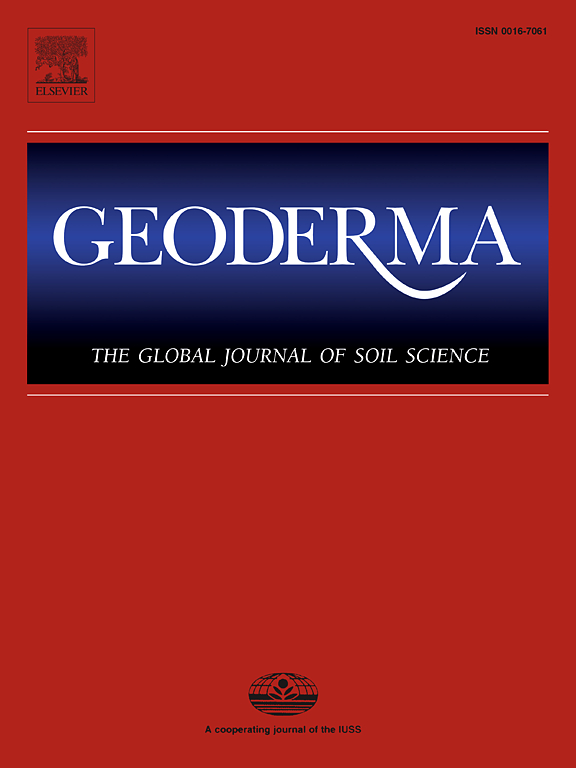Straw return combined with water-saving irrigation increases microbial necromass accumulation by accelerating microbial growth-turnover in Mollisols of paddy fields
IF 5.6
1区 农林科学
Q1 SOIL SCIENCE
引用次数: 0
Abstract
Soil microorganisms are key to the flow of carbon through soils. As the most carbon-rich soils, Mollisols are very sensitive to disturbance and more prone to be carbon sources than carbon sinks. To understand how the microbial physiology [i.e., microbial growth, respiration, carbon use efficiency (CUE) and biomass turnover] of Mollisols responds to different management protocols, and to evaluate their carbon sequestration potential, we examined microbial anabolism, catabolism and necromass accumulation in Mollisols paddy fields under four treatments: (i) controlled irrigation + rice (Oryza sativa L.) straw removal (CI), (ii) flooded irrigation + rice straw removal (FI), (iii) controlled irrigation + rice straw return (CI-SR), and (iv) flooded irrigation + rice straw return (FI-SR). Microbial physiology was determined by a substrate-independent H218O labeling method. Microbial necromass accumulation was quantified by the biomarker analysis of amino sugars. Water-saving irrigation increased microbial CUE and accelerated microbial growth and turnover. Moreover, by providing sufficient substrate, straw return further accelerated microbial growth, while promoted microbial respiration. The rise of microbial respiration under straw return was proportionally less than that of microbial growth. The accelerated production or turnover of microbial biomass was expected to increase microbial biomass and necromass. Straw return significantly increased the microbial biomass and necromass, especially under the controlled irrigation. Compared with the other treatments, the greatest increase in soil microbial necromass C (21.24–39.26 %) and microbial biomass C (8.65–26.09 %) occurred under CI-SR. Despite this treatment enhancing microbial respiration, strong positive correlations were found between soil organic carbon (SOC) content and both microbial growth rate and necromass accumulation. The CI-SR treatment strengthened microbial roles in Mollisols paddy fields by enhancing the net flux of microbial biomass formation, and consequently promoting the incorporation of greater amounts of microbial-derived C in the SOC pool.
求助全文
约1分钟内获得全文
求助全文
来源期刊

Geoderma
农林科学-土壤科学
CiteScore
11.80
自引率
6.60%
发文量
597
审稿时长
58 days
期刊介绍:
Geoderma - the global journal of soil science - welcomes authors, readers and soil research from all parts of the world, encourages worldwide soil studies, and embraces all aspects of soil science and its associated pedagogy. The journal particularly welcomes interdisciplinary work focusing on dynamic soil processes and functions across space and time.
 求助内容:
求助内容: 应助结果提醒方式:
应助结果提醒方式:


